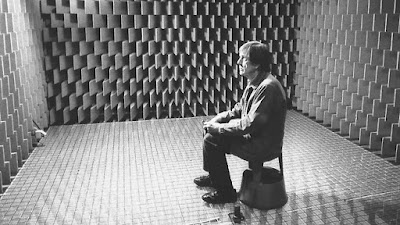Note: for better understanding, please read Part 1 of this article 👉first.
For many, ASMR seems to be strongly associated with this type of Youtube video - although the phenomenon has been around much longer than Youtube has even existed. A very important figure in the 1980ies was painter Bob Ross, whose quiet speech and soft brushing gave some viewers their first "ASMRgasm".
Personally, I am a devotee of a variant of ASMR that has to do exclusively with "white noise." My brain massage starts automatically when I catch a fan somewhere, a ventilator, a heater. If it's also raining and thundering and lightning, i am practically in heaven. The fact that you feel a sense of happiness when you feel a warm stream of air may well have its origins in early childhood experiences of security. Many people, for example, also love the sound and warm blast of a hair dryer - and can be incredibly creative from this state.
 |
 |
| https://sleepasloth.com/ |
Brown Noise: Brown Noise has even less treble components, whereby here the low and middle frequencies are approximately equally intense. By the way, in the technical literature "Brown" is not a color classification, but comes from "Brownian Motion", named after a specific way in which particles move in a liquid. Brown noise is most reminiscent of strong wind or the sound of large ocean waves crashing in.
Blue Noise: Blue noise is mentioned here only for the sake of completeness; it contains only high frequency components. This spectrum is used in recording studios, for example, to round off any overmodulation peaks in a recorded song afterwards.
Gray noise: This is the spectrum your blog host is most comfortable with; it mainly uses low frequencies. This is the sound of huge fans used in industry. Musically, Grey Noise is essential for the composition of so-called drones.
Green Noise: Due to its mainly mid-frequency components, Green Noise is often used to simulate ambient sounds in nature.
By the way, a purely theoretical concept is "Black Noise": The absence of all signals would mean total silence - something that is nowhere possible on earth (I wrote about it in the first article of this series).
So with this rough classification, it should be possible for the curious listener to find the perfect noise for them. What you do with it (mask the tinnitus, fall asleep easier, concentrate better, etc.) is up to you. For the pareidolia described in the previous article, which can trigger quite exciting audio phenomena such as voices and "ghostly" music, I recommend a combination of different sounds and for sensation enhancement the consumption of various substances.
***
¹
https://de.wikipedia.org/wiki/Autonomous_Sensory_Meridian_Response
²
https://time.com/4694555/pink-noise-deep-sleep-improve-memory/



